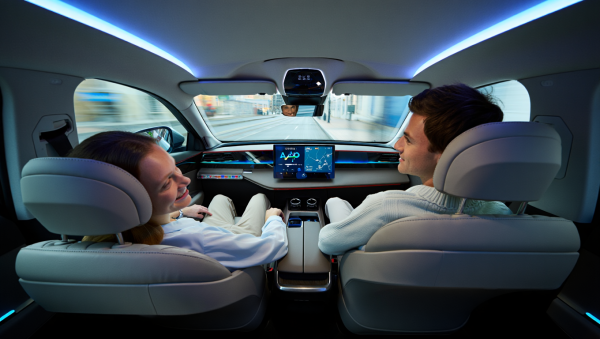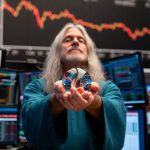
The Myth of Inevitable Dominance
Nov 20, 2025
Every few years the Tesla story sheds its skin and grows a new one. This cycle depends on the same idea: Musk alone sees a future the rest of the industry is too timid to reach. Analysts repeat the vision because it feels grand. Some even call it destiny. One of the loudest insists Tesla will control eighty percent of the autonomous landscape within ten years. He frames autonomy as a frontier where Musk has already planted the flag. The claim floats on a cloud of faith rather than grounded evidence, because no credible data supports such a sweep. The global autonomous race includes Waymo, Baidu, Mobileye, AutoX, Pony.ai, and an entire industrial block in China that treats autonomy as a national objective. Eighty percent control requires a rival collapse, a regulatory miracle, and a supreme technological gap that does not exist.
Tesla’s strongest supporters mistake scale of ambition for inevitability. They assume the company’s size and charisma grant immunity from physics, capital constraints, and state-backed competitors. If narrative alone could win the future, Tesla would already own it. The trouble is that autonomy depends on reliability that exceeds human precision and on sensors and batteries that perform under harsh conditions without fail. None of that bends to charisma.
Robotaxis and the Problem of Never Arriving
Tesla highlights its robotaxi pilots in Austin and the San Francisco Bay Area as proof of an approaching revolution. These programs sound impressive until you examine their structure. Safety drivers sit behind the wheel for a reason. The vehicles still struggle with stability across unknown conditions, unpredictable pedestrians, inconsistent lane markings, and the quiet hazards that define city life. Musk says safety drivers in Austin will be gone by the end of the year. He has said similar things many times. Each deadline moves when the real world resists him.
The next test markets include Miami, Dallas, Phoenix, and Las Vegas. These cities offer friendlier regulators and simpler road grids. They offer photo opportunities for a narrative hungry for momentum. Success in cities built on flat sprawl and warm climates does not promise success in Chicago, Boston, New York, Tokyo, or London. Waymo already operates commercial service in parts of Phoenix, Los Angeles, and San Francisco without drivers. Baidu’s Apollo Go handles complex urban environments in Wuhan and Beijing at scale. These competitors do not broadcast timelines; they deliver measurable progress.
Autonomy becomes meaningful only when it becomes boring. Reliability must reach mind-numbing consistency. Until then, a robotaxi is an experiment, not a business. Tesla talks about autonomy as if the last ten percent of the problem will surrender to belief. History says otherwise. The last ten percent contains the full weight of difficulty.
The Cybercab Promise and the Moving Horizon
Tesla promises Cybercab production next April. It presents this date as a milestone rather than a gamble. Production schedules require supply chain clarity, factory readiness, validated safety systems, and cost models that remain intact under stress. Tesla provides none of this. It offers a date and trusts the market to cheer. Deadlines without structural detail resemble wagers more than forecasts.
The company’s timeline history shows a pattern. The solar roof slipped for years. The Semi crawled forward with delay after delay. The Roadster returned to the vapor pool. Full Self Driving promised coast-to-coast autonomy in 2018. The horizon always recedes because Musk pushes it faster than engineering reality can follow. The public narrative moves on charm. The factories move on physics. Analysts rarely ask why the pattern persists. The answer hides in the sentiment arc: hope builds, expectation coils, delay snaps it, and the cycle resets around a new promise.
Investors who treat Cybercab timelines as law ignore Tesla’s own track record. They also ignore the rising strength of rivals. Baidu runs over four million autonomous rides a quarter. Cruise, before its meltdown, logged millions of miles. Waymo now operates multi-city service with performance data that regulators trust. Tesla’s robotaxi fleet does not exist beyond prototypes. Customers cannot ride one. Regulators cannot certify one. Competitors already run thousands.
Optimus and the Great Robot Gamble
The humanoid robot narrative shifts the conversation from cars to metaphysics. Musk insists Optimus will dwarf the economic impact of Tesla’s entire vehicle business. The claim seduces investors because it promises a universe where every human task can be outsourced to a gentle mechanical servant. Tesla highlights its Fremont pilot line and its plan for a million-unit facility in the future. Musk mentions a future ten million-unit line at Giga Texas. He offers no timeline because timelines expose vulnerability.
The robots themselves reveal the truth. They walk with stiffness that betrays their limits. They rely on external supports during many demonstrations. They show controlled motions rather than open-world adaptability. Compare this to Unitree’s H1, which runs, jumps, balances, and performs tasks at a price far lower than anything Tesla can deliver. Compare this to Agility’s Digit, which performs warehouse and logistics work with industrial partners. Compare this to Fourier’s well-tested platforms that Chinese factories deploy at scale. Tesla talks about robots as destiny. Its rivals treat robots as products.
Investors who treat Optimus as a guaranteed breakthrough ignore the hard facts of industrial robotics. Reliability, cost reduction, actuator lifespan, thermal efficiency, and field safety define success. Unitree solves these problems with ruthless focus. BYD enters robotics with supply chain force and battery excellence. China supports robotics with government incentives, industrial clustering, and a culture trained to sprint. Tesla brings charisma and a fledgling prototype.
Battery Reality and the Chinese Wall Tesla Cannot Climb
A technology empire rises on its energy source. Tesla treats batteries as a story still unfolding. BYD treats batteries as a domination play already won. BYD’s blade battery architecture beats Tesla on cost, safety, scalability, and cycle stability. BYD controls raw materials through long term contracts and national supply chain alignment. Tesla struggles to scale 4680 cells and suffers from yield problems and inconsistent energy density.
China controls over seventy percent of global cathode production, seventy percent of anode production, and nearly seventy percent of global cell manufacturing capacity. Tesla operates within this ecosystem rather than above it. The notion that Tesla will outmaneuver BYD on energy storage is wishful thinking. BYD builds batteries for itself and for other manufacturers. Its chemistry reaches maturity faster because it controls mines, refineries, factories, logistics, and distribution. Tesla outsources half its cells and still hopes to master internal production. Hope is not a competitive edge.
Manufacturing Velocity: A Game Tesla No Longer Dominates
Tesla once shocked the automotive world with speed, vertical integration, and daring. That advantage eroded as China industrialized at a pace no Western company can match. BYD builds factories faster than Tesla negotiates permits. BYD sells more battery electric vehicles than Tesla in many quarters. It expands across Southeast Asia, South America, the Middle East, and Europe with momentum that resembles a geopolitical wave. Tesla cannot match this scale because Tesla is not the central project of a nation. BYD is.
Rivals like Xiaomi enter the EV market with software-driven architectures, integrated ecosystems, and supply chains Tesla cannot counter. Huawei collaborates with multiple automakers and pushes autonomous performance that reaches parity with Tesla in many conditions. NIO and Zeekr innovate with battery swapping, luxury interiors, and intelligent cabin design. The market no longer revolves around Tesla. It evolves past it.
Autonomy Without Guarantees
Tesla’s Full Self Driving system improves, but improvement does not guarantee dominance. The company depends on a vision-only approach that removes lidar and radar, while most leaders in autonomy use sensor fusion for reliability. Tesla insists vision is enough. The evidence suggests vision struggles with depth estimation, occlusion, reflective surfaces, complex intersections, and chaotic weather. When Tesla’s system behaves unpredictably, Musk reframes the issue as temporary. When regulators intervene, he reframes them as obstacles. Narrative wins the press cycle. Physics remains unmoved.
Waymo operates with lidar, radar, and high precision sensors. Baidu relies on a similar fusion stack. Their disengagement numbers trend downward. Their systems produce fewer avoidable errors. Their services meet regulatory standards that Tesla has not reached. Tesla’s defenders argue that volume of data will crush the gap. That belief ignores the reality that poorly labeled or inconsistent data at massive scale can amplify confusion rather than eliminate it.
The Compensation Targets and the Dangerous Clock
Musk’s compensation package includes targets that feel less like business goals and more like science fiction objectives. He must deliver ten million FSD subscriptions, one million robots, and one million robotaxis. Hitting these requires a world where Tesla operates in multiple dimensions simultaneously: autonomy, robotics, manufacturing, and infrastructure. Missing them requires nothing more than reality behaving the way it usually does.
These targets push Tesla toward spectacle because spectacle buys sentiment. Sentiment buys time. Time buys capital. Capital funds the dream. Musk understands the rhythm. Investors who ignore it repeat the same cycle of surprise and disappointment.
The Future Tesla Wants and the Future Tesla Will Face
Tesla still holds strengths. The company has unmatched brand gravity, strong software culture, high margins on FSD subscriptions, and a global presence other companies envy. Its cars remain aspirational for many. Its AI team is large and talented. Yet the future Tesla imagines collides with a world where China’s robotics wave accelerates, Europe regulates harder, and the United States grows less tolerant of promises that arrive late.
The Tesla bulls who insist on absolute dominance ignore the brutal reality of industrial competition. They dream in cinematic scale. They treat Musk as a singular prophet while the global market approaches him with cold engineering and faster manufacturing. Tesla can still be great. It cannot be inevitable. The gap between those two ideas will define the next decade.










